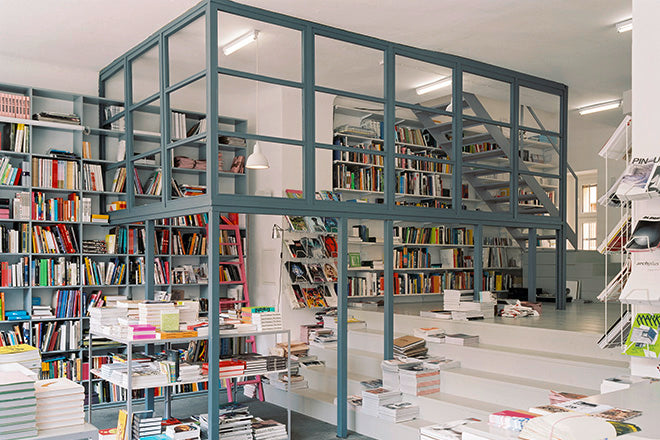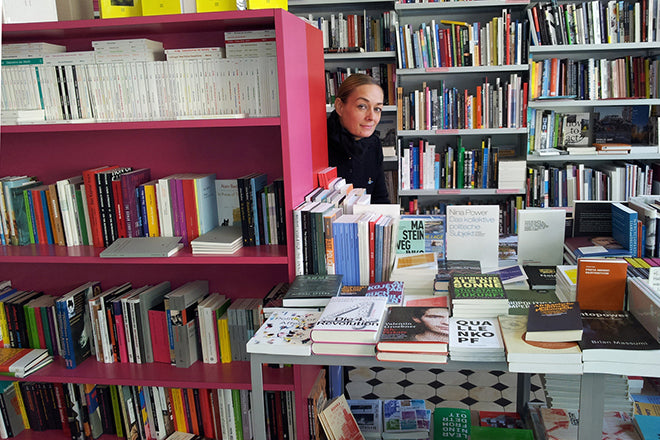
Pro qm, Berlin
Today we’re in Berlin’s Mitte visiting shop manager Katja Reichard of Pro qm, finding out which magazines do well at the beloved art and design bookshop.

When and why did you set up Pro qm?
Pro qm is a specialized bookstore in Berlin-Mitte, founded by me together with my friends Jesko Fezer and Axel J. Wieder in 1999. The store evolved from our own theoretical debates and discussions on urban politics into a physical location, where we could facilitate the social engagement of such questions.

Today, Pro qm is a team of ten people, who are engaged in different fields of academic research and artistic production. The store hosts regular book presentations, exhibitions and also performative events. Our stock is very international, at least half is non-German, and we importa a lot of books & magazines and deal with many publishers directly.

How do you lay out the magazines around the shop and how did you decide on that set up?
The interior of our space was redesigned by the Berlin-based architects ifau und Jesko Fezer. The building itself dates back to the late 1920s and was originally designed by the office of modernist architect Hans Poelzig. The categorization and sorting of shelves and tables isn’t fixed, but responds to the discourses and interests as they come in and out. Alongside titles on local processes, such as urban subcultures in Berlin for example, we conceive thematic clusters around issues that we think are gaining importance. Magazines are sorted in tandem with these sections.
Who are your customers?
Afficionados and afficionadas from Berlin and abroad – architects, artists, other culture people, designers, social scientists, some tourists…


What’s your best-seller this month?
As usual: the current issue of Texte zur Kunst (Nr. 99, “Photography”) sells really well, as does the current issue of arch+ (Nr.220, “Normcore”).

Do you have a favourite local magazine?
At the moment it is Free Berlin, a free newspaper on creativity, the creative imperative, and the urban politics around it in Berlin. It is published by our friends from Errant Bodies Press.
What has the biggest challenge been?
As with most bookstores, overstock is an issue. We’re all big fans of books and love to buy way too much in order to make things available. We need to be tamed by our finance department – self-control in the face of new titles is a tough job.
What changes have you seen in the magazines since you opened?
Today in an era of accelerated output it has become increasingly easy to publish. Too much is being published, and often too fast, be it books or magazines. Quality, which is not an issue of money going into the printing, depends on careful planning of content and form and attentiveness to details. At the same time, fluctuation is high. Many great and promising new publication projects don’t survive because distribution issues and problems have been underestimated. That’s always very sad.


